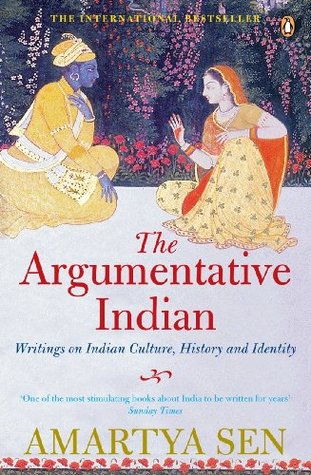More on this book
Community
Kindle Notes & Highlights
by
Amartya Sen
Read between
April 15 - May 11, 2018
The role of reasoning in the identity of Indians is the subject matter of the last part of the book, which begins with an essay on the reach of reasoning, including a rejection of the often-aired claim that analytical reasoning and critique are quintessentially ‘Western’ or ‘European’ traditions.
A defeated argument that refuses to be obliterated can remain very alive.
‘We all seem to be affected by desire, anger, fear, sorrow, worry, hunger, and labour; how do we have caste differences then?’13
Parsees started arriving in the late seventh century, as soon as persecution of Zoroastrianism began in Persia. The Baha’is were among the last groups to seek refuge in India, in the last century.
Sanskrit not only has a bigger body of religious literature than exists in any other classical language, it also has a larger volume of agnostic or atheistic writings than in any other classical language.
Just consider how terrible the day of your death will be. Others will go on speaking, and you will not be able to argue back.
Indeed, the concept of Hindutva was elaborately discussed in a book of that name, published in 1923, authored by Vinayak Damodar Savarkar, often called ‘Veer’ (valiant) Savarkar, a Hindu chauvinist leader of remarkable energy.
It is not often realized that even the word ‘Mandarin’, standing as it does for a central concept in Chinese culture, is derived from a Sanskrit word, Mantrī, which went from India to China via Malaya.
Rabindranath Tagore put the rationale well, in a letter to C. F. Andrews: ‘Whatever we understand and enjoy in human products instantly becomes ours, wherever they might have their origin.’*
Important as history is, reasoning has to go beyond the past.
Attempts from outside India to understand and interpret the country’s traditions can be put into at least three distinct categories, which I shall call exoticist approaches, magisterial approaches and curatorial approaches.
Indeed, India, Pakistan, Bangladesh and Sri Lanka have all had, or currently have, women Prime Ministers – something that the United States (along with France, Italy, Germany and Japan) has never had and does not seem poised to have in the near future (if I am any judge).
but that the vast majority of Indian states fall firmly into two contiguous halves, classified broadly into the north and west on one side and the south and east on the other. Indeed – and this is quite remarkable – every state in the north and west10 has a strictly lower female-male ratio of children than every state in the east and south (even Tamil Nadu fits into this classification), and the country stands firmly and sharply divided.
Our cities and forests, our fields and villages will burn for days. Rivers will turn to poison. The air will become fire. The wind will spread the flames. When everything there is to burn has burned and the fires die, smoke will rise and shut out the sun.
From the arithmetic conundrums of the Atharvaveda and the numerical fascination of the epics to the grammatical tables of Pāṇini and the numbering of sexual positions by Vātsāyana, there is a remarkable obsession in ancient India with enumeration and calculation.
When a Bengali Hindu does religious ceremonies according to the local calendar, he or she may not be quite aware that the dates that are invoked in the calendrical accompaniment of the Hindu practices are attuned to commemorating Muhammad’s journey from Mecca to Medina, albeit in a mixed lunar-solar representation.


